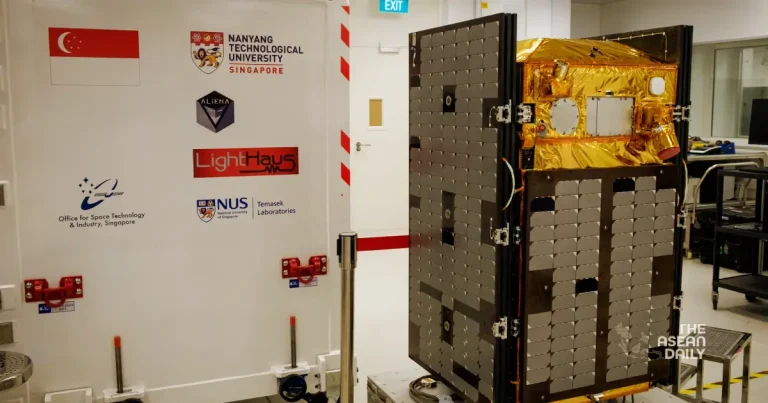12-6-2024 (SINGAPORE) The Republic’s inaugural satellite, designed to operate at the closest distance to Earth, is set for launch in mid-2025. Built by Nanyang Technological University (NTU), this cutting-edge satellite will incorporate novel technologies and capture high-quality imagery.
Most satellites typically orbit at altitudes ranging from 500km to 800km. However, the new 1.3-meter-tall satellite, named the Extremely Low Earth Imaging Technology Explorer (Elite), will orbit at a mere 250km above the Earth’s surface.
This altitude, relatively unexplored by satellites, presents a challenging environment due to the presence of highly reactive gases and significant atmospheric friction. Only a limited number of satellites currently operate in this very low Earth orbit.
Elite, a research satellite, is expected to spend approximately 1.5 years in space. During this time, it will test innovative home-grown technologies and assess the feasibility of launching additional Singaporean satellites into lower orbits.
The Elite satellite, roughly the size of a small refrigerator, marks NTU’s 14th and most sophisticated satellite project. Its launch coincides with a period of heightened solar activity, anticipated between 2024 and 2025.
Solar storms and flares, while creating stunning auroras visible far from the poles, pose significant risks to satellites by intensifying atmospheric friction and damaging sensitive electronic components.
Despite these challenges, NTU’s Satellite Research Centre remains undeterred. Singapore has successfully launched over 30 satellites since 2011.
A primary challenge for satellites in very low Earth orbit is atmospheric drag, which can slow them down, causing them to deviate from their course and re-enter the atmosphere prematurely. Increased solar activity exacerbates these conditions.

To counteract this, Elite will be equipped with an innovative, fuel-efficient engine developed by Aliena, an NTU deep-tech spin-off. This engine is designed to combat atmospheric drag effectively.
Mark Lim, Aliena’s chief executive, stated, “The engine needs to deliver a significant amount of thrust with lower power to ensure continuous compensation for drag without depleting the batteries. Rapid engine firings during unexpected events, like severe geomagnetic storms, will help maintain the satellite’s altitude.”
Operating closer to Earth allows Elite to capture higher-resolution images of activities such as agriculture and mining with smaller camera optics. The satellite will feature Singapore’s first domestically designed space camera, capable of capturing images of objects as small as 50cm.
Unlike conventional satellite cameras with large telescopic lenses, Elite’s camera is a product of local tech firm LightHaus Photonics.
At 250km from Earth, satellites encounter atomic oxygen, a reactive gas that can corrode and degrade electronic materials. To protect Elite, NTU’s Temasek Laboratories is developing an ultra-thin, transparent nanotechnology coating.
Elite represents a collaborative effort between NTU, Aliena, LightHaus Photonics, NUS Temasek Laboratories, and ST Engineering Satellite Systems.
During its 1.5-year mission, Elite will gradually lower its orbit, gathering data as it descends until it eventually burns up in the atmosphere. This ensures the satellite will not contribute to space debris or junk.




